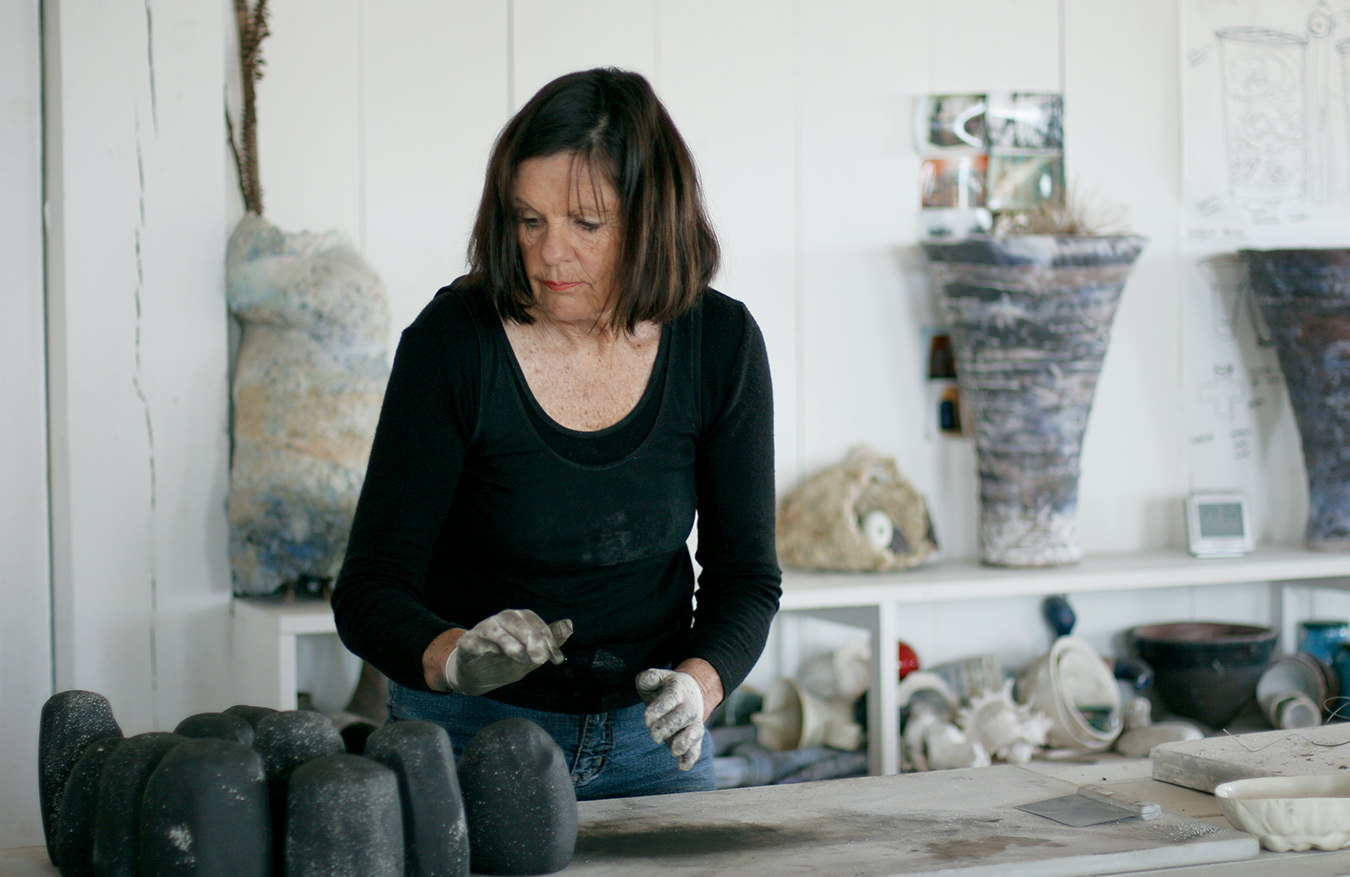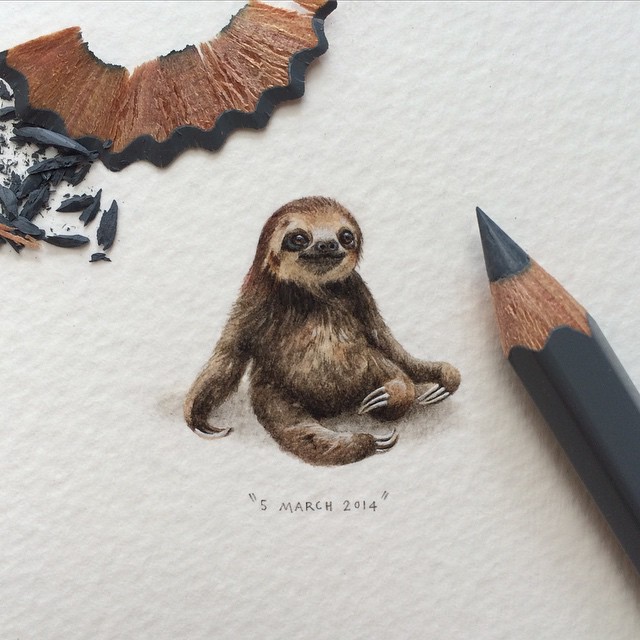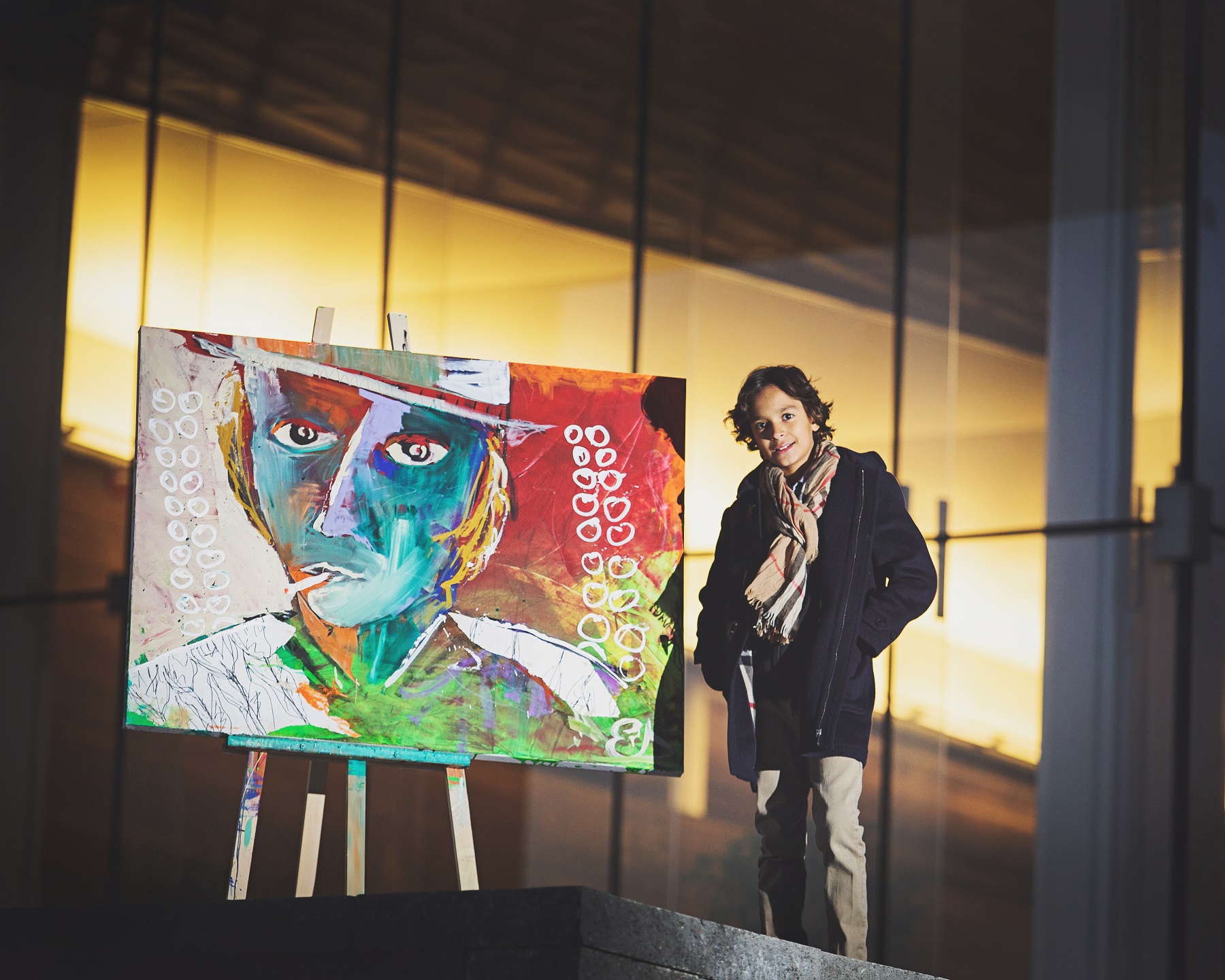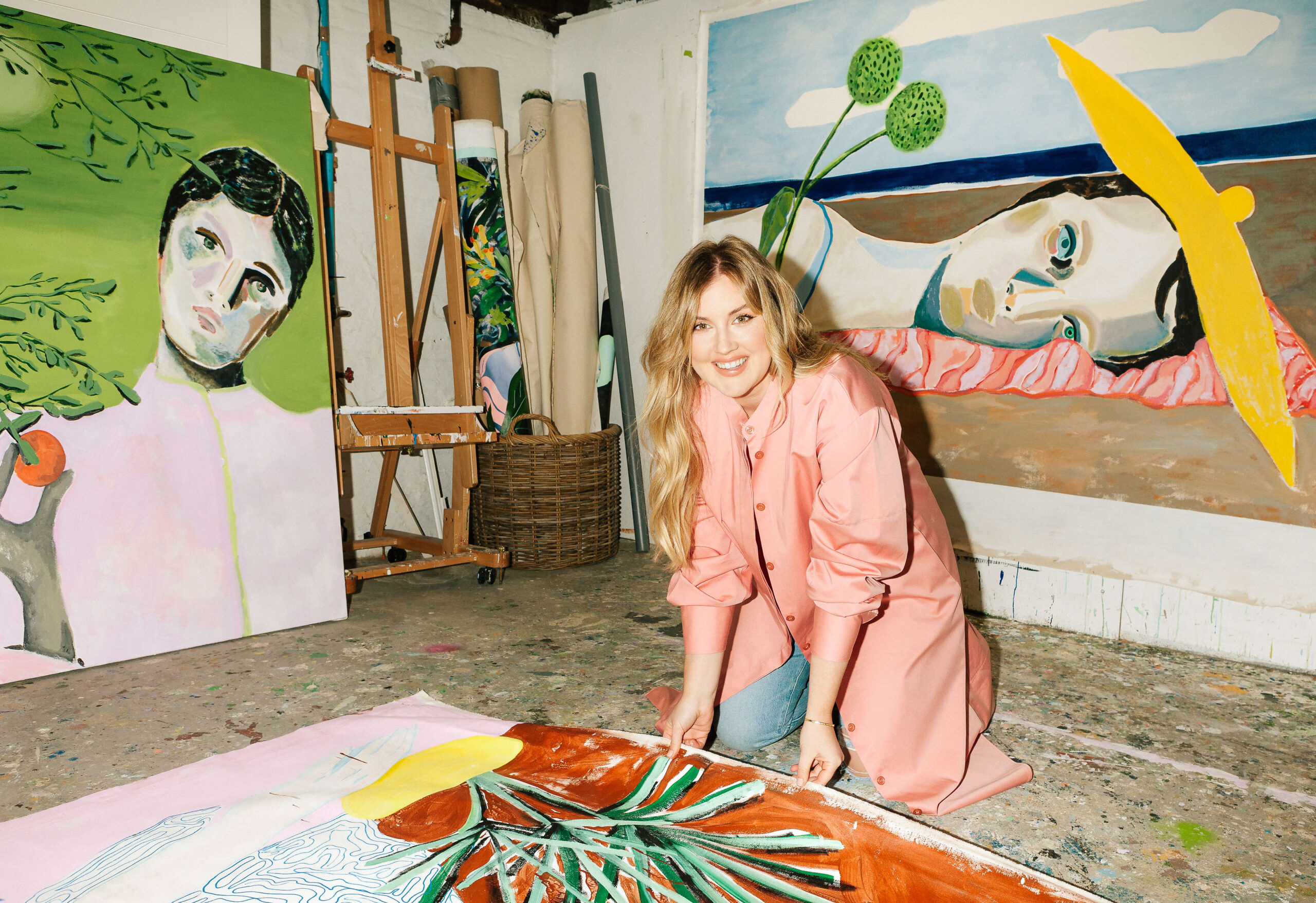
Erin Armstrong’s Controlled Chaos
Sudden success and awkward moments.
Erin Armstrong’s art career started with playing hooky from school. From her new home and studio in Toronto’s East End, she tells me about running the thermometer under hot water in grade school so she could stay at her mom’s art studio with her, the tap so hot that the temperature reading would probably have meant she was dying. “That’s how I learned initially to draw and paint, because I just basically refused to go to school until I was in, like, Grade 8. And then I was forced to go, but now my mom jokes that it paid off,” she says.
Armstrong’s big break was swift and unexpected. After completing a degree in history from Dalhousie, she worked a string of creative jobs, including a stint as a beauty intern at Flare magazine, but felt unfulfilled and frustrated. On a whim, in 2014 she applied to exhibit her work at the Artist Project, a fair in Toronto that showcases independent Canadian artists. Artists normally apply up to a year in advance, but with the show just three weeks out, a last-minute dropout left an opening. The show accepted her on the condition that she already had a collection ready to show.
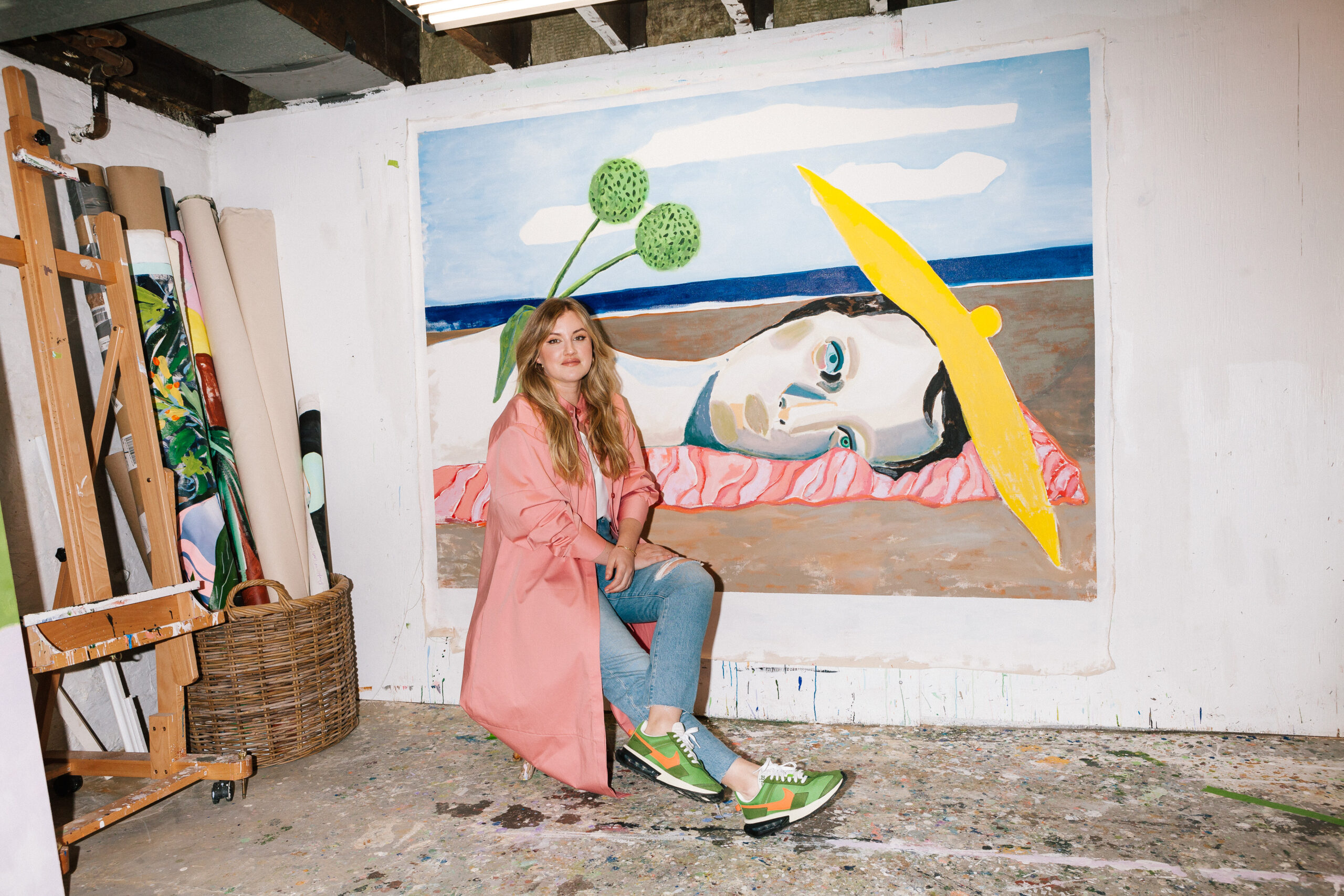
“I just lied and said, ‘Yeah, I have the paintings done,’” Armstrong says. At 24, having never sold a painting or exhibited professionally, she churned out 10 pieces in just three weeks. Armstrong maintained that near-frenzied pace for the better part of a decade.
At the fair, she was given one of the smallest, most tucked-away booths. “I didn’t really know what I was getting myself into,” Armstrong laughs. “First, nobody came in, and I was basically about to cry because I felt so awkward.” That feeling didn’t last long—within 45 minutes, she’d sold a 48-by-36-inch painting for $450. Today, a painting that size would go for about $6,000. “I thought it was insane that I was charging this, and I was defrauding them.” By the end of the night, she’d sold all her paintings, and before the weekend was up, she would catch the eye of a gallery in SoHo, New York, going on to exhibit there.
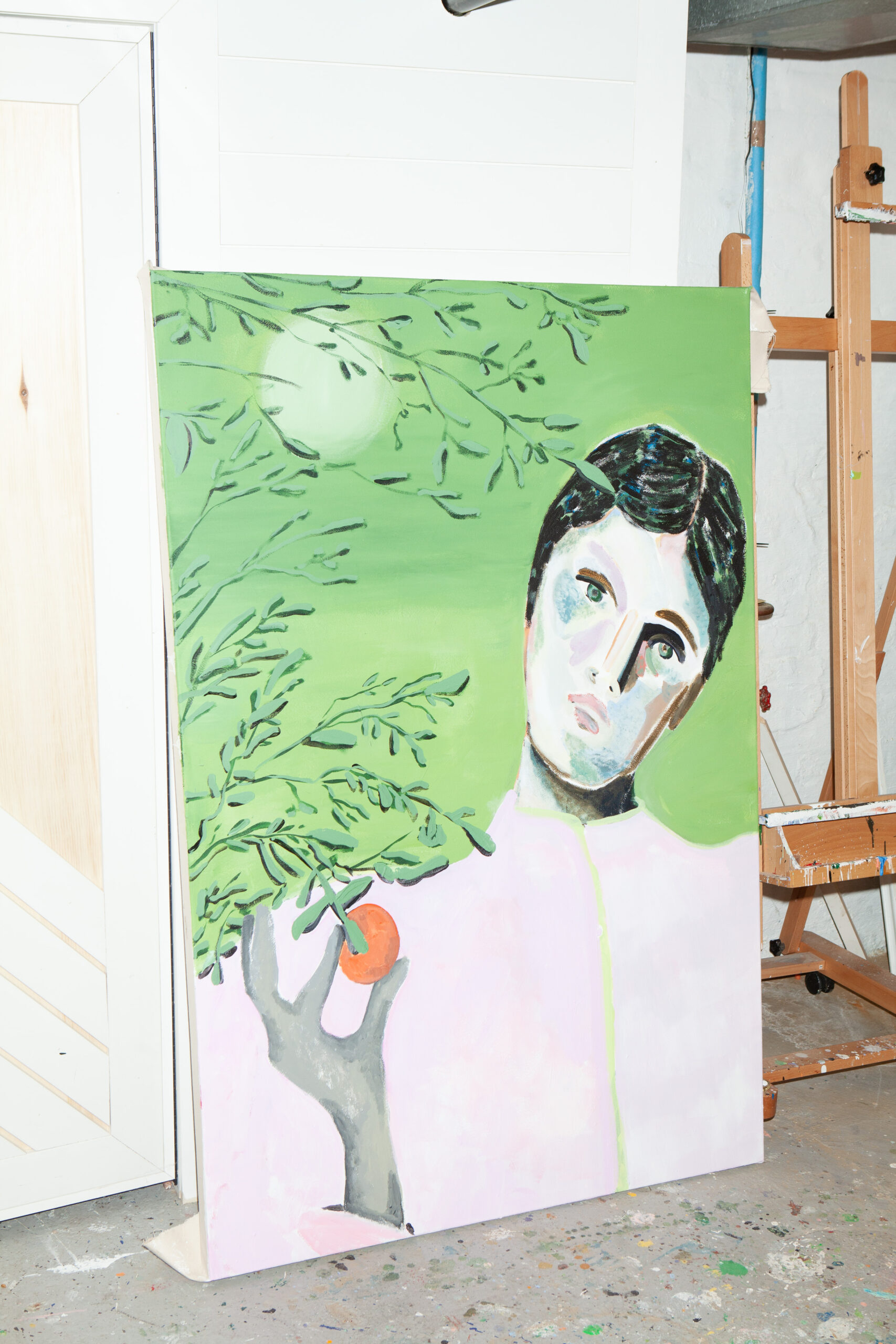
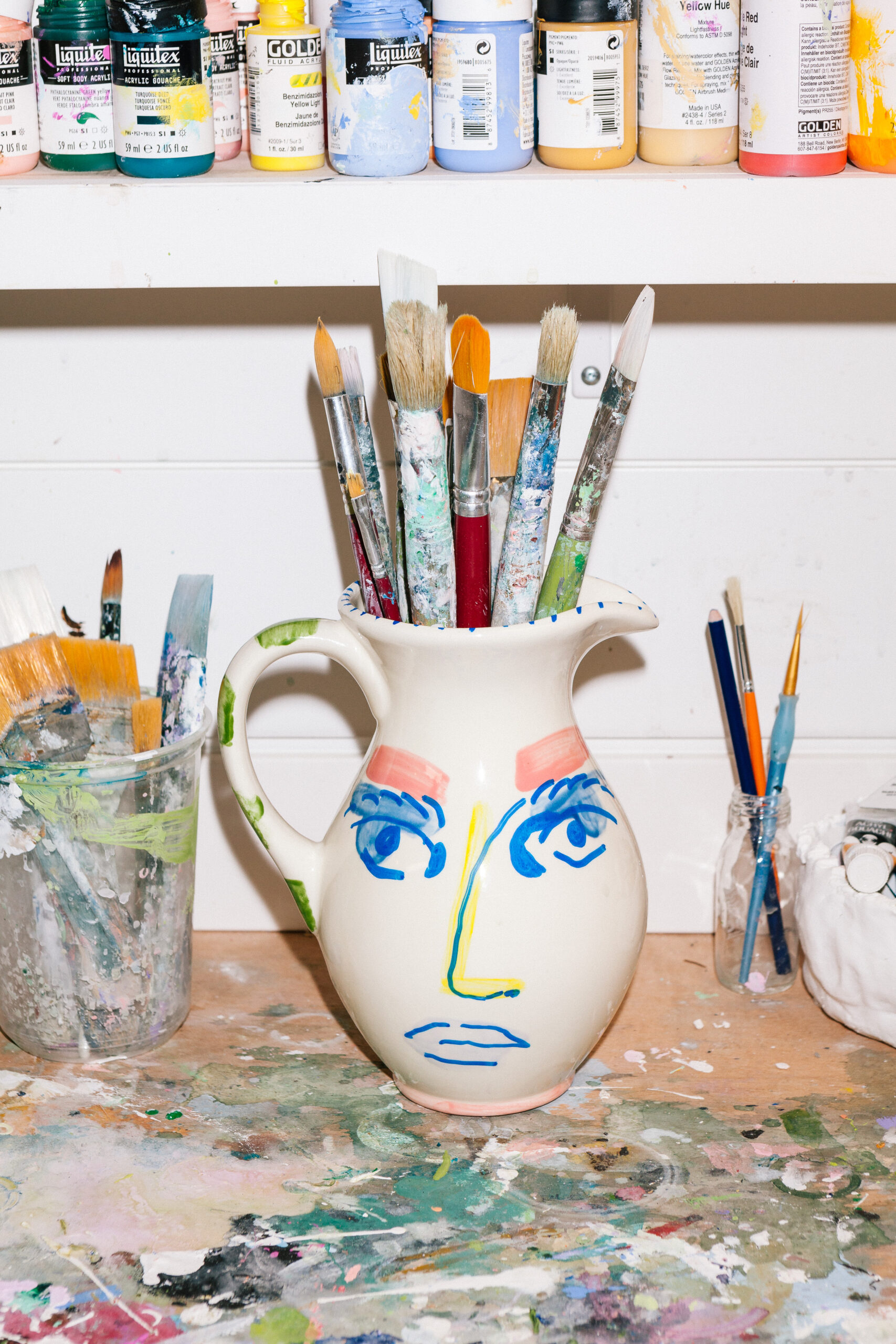
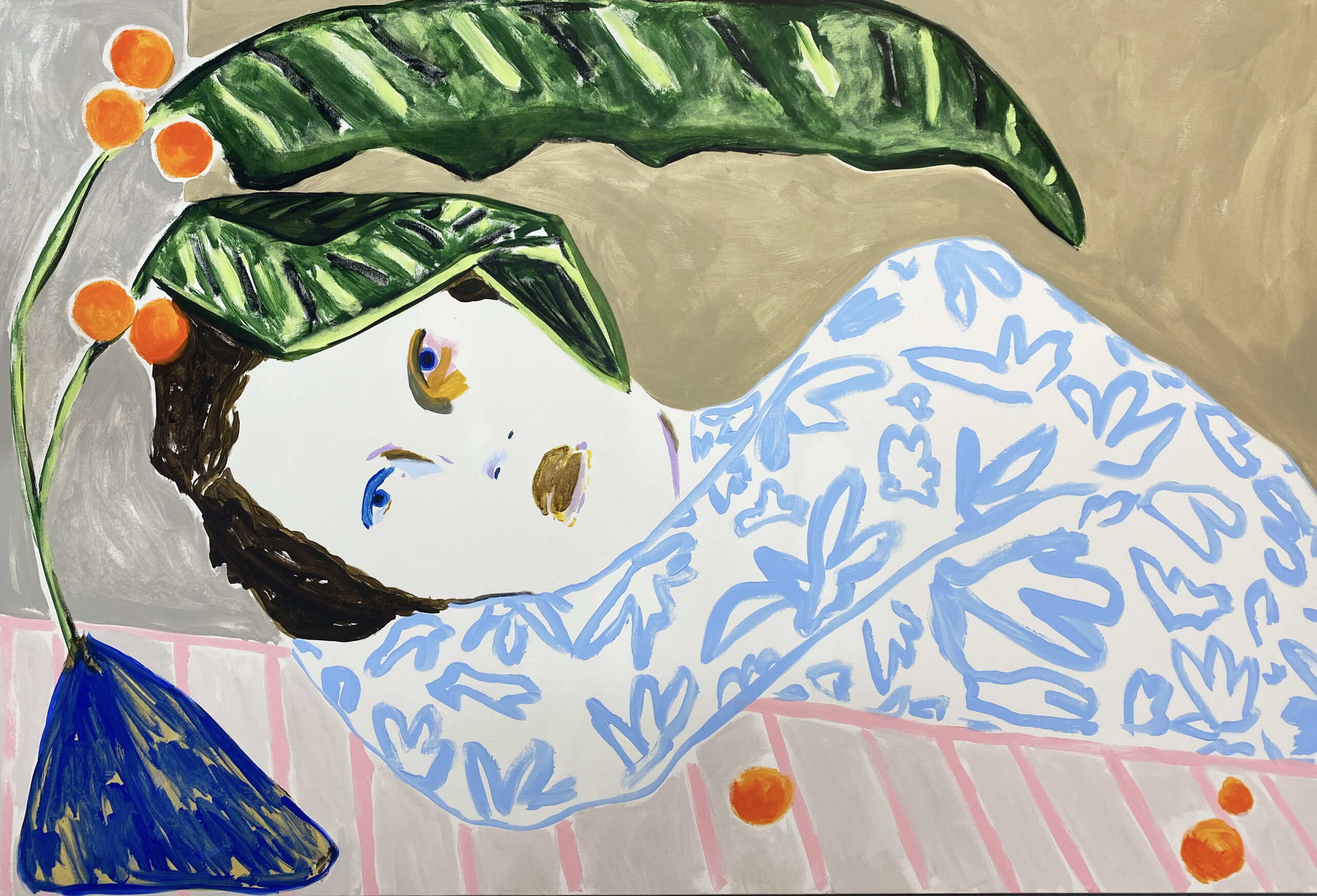
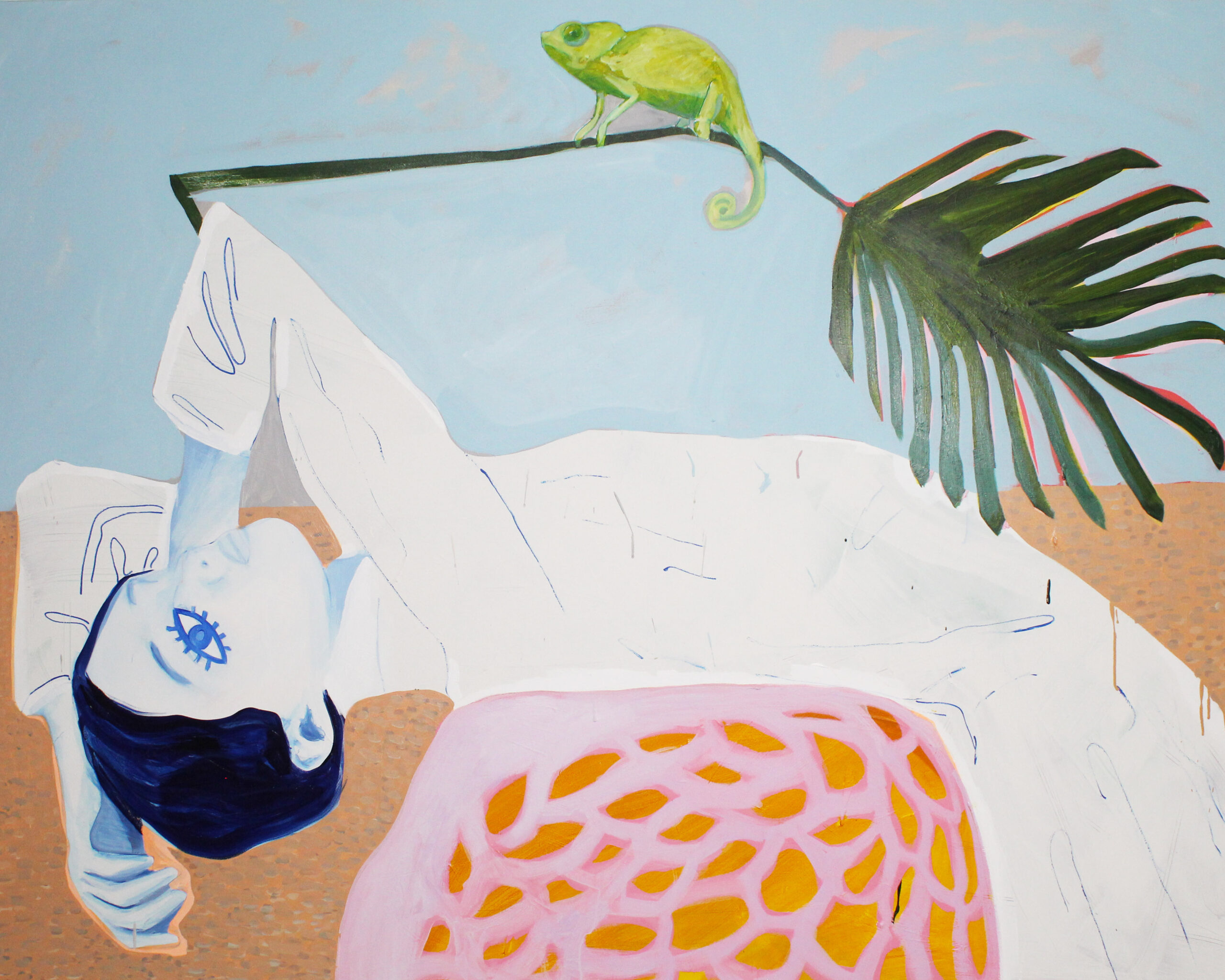
Erin Armstrong paintings capture humans reclined and contorted into angular shapes. The artist is currently working on a series of jugglers.
Though the opportunity may have been a combination of good timing and chance, Armstrong’s distinctive style has propelled her career to where it is today, exhibiting across Canada, the U.S., and Europe. Her work is figurative, playing with quick, dripping gestural strokes, bright colours, and strong shapes to capture dreamlike portraits. She describes her work as controlled chaos: the figures are structured, more or less true to human form, while pastel-coloured flora and fauna wave in the background. The characters often wear hats and bold clothing in loud patterns. “The outfits are almost like an abstract painting in itself,” she explains. She often plays with movement, capturing figures mid-lean or contorted into angular, but still human, shapes, almost a reimagined darker take on a fashion spread.
“Life is made up of so many different feelings of joy and anxiety and depression and fear and happiness,” Armstrong says. This cocktail of emotions is incorporated into each of Armstrong’s paintings, specifically in the figures’ eyes—some spiral into swirls, while others are paired in mismatched colours, but they always convey a more complex layer of narrative captured in simple linework.
“A lot of the time I make the eyes kind of drilling right into your soul, staring at you through the painting,” she remarks when I comment on their pull. “But also, they’re supposed to be looking blankly and then leave it up to the viewer to interpret what they’re seeing and what they feel from that intense look.”
Her ability to create work that’s both intense and playful has continued to capture the attention of collectors and galleries—Armstrong is now represented by Bau-Xi Gallery in Toronto and Vancouver, and Duran|Mashaal in Montreal. Her CV reads like that of someone who’s been operating in the art world for a lifetime rather than just eight years, with a long list of solo shows and collaborations with major brands such as Nike and Anthropologie. In 2021 alone, she had group exhibits at the Grove Collective and BEERS London in the U.K., along with two solo shows, one at Bau-Xi in Toronto, the other at Galerie Luisa Wang in Paris.
She recalls receiving messages while in France from people taking the train into Amsterdam to visit the show. “It’s really cool. And it just feels really nice that you have people that you’ve never met, and they’re saying that your work speaks to them.”
In Erin Armstrong’s work, her characters embody what it feels like to be joyful, sad, excited, and maybe just a bit overwhelmed all at once—a medley of emotions that feel distinctly human.
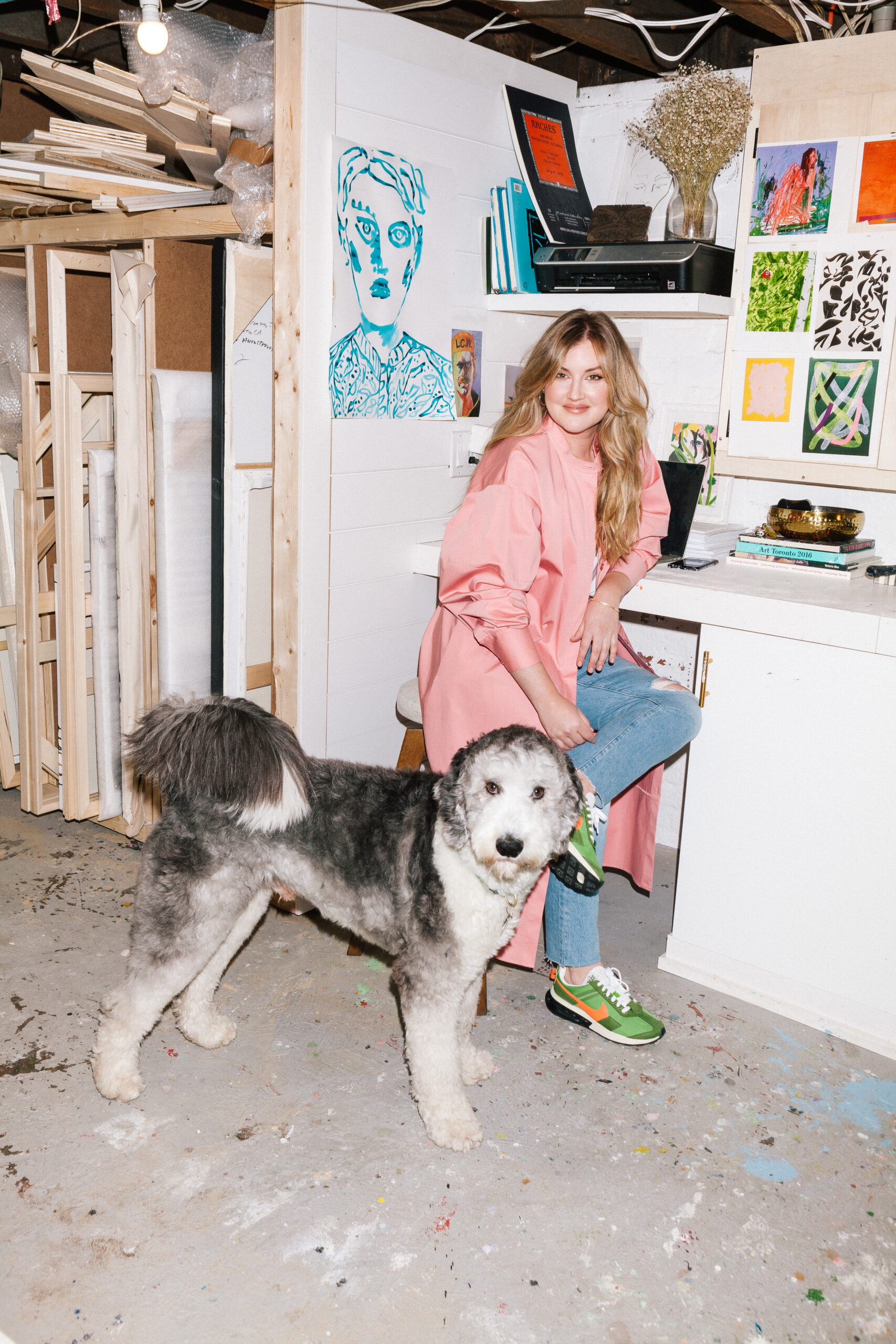
It would be easy to assume Armstrong’s success at such a young age would lead to overconfidence—how could your ego not swell a little when Portia de Rossi picks you for a collaboration with her new 3D art printing company? In reality, she’s only now coming to accept the status she’s reached. As a young artist struggling to find her footing in a competitive industry, her lack of formal training was a point of insecurity (she turned down her spot at OCAD on the advice of her high-school guidance counsellor). “I actually don’t know the proper techniques and everything,” Armstrong says. “So I had this whole internal battle for a long time, thinking I was doing something wrong, and it was embarrassing.”
Even after the Artist Project led to a slew of group shows, including in Australia and Edinburgh, and a spot on Saatchi’s One to Watch list, she didn’t think art could be a lucrative career, so she enrolled in an intensive one-year graphic design program. The day she graduated, as she was on her way to Alaska with a friend, she got an email from Bau-Xi gallery, which would end up signing her shortly after she got back. “Almost right away they started selling my paintings very fast, enough that I was able to live full time off of it. And I got a studio at Queen and Spadina and set up a studio and then, yeah, I never had to work a day as a graphic designer.”
In the end, her lack of formal training helped her develop her personal style. “There really is no right way to make a painting,” she says. “A lot of it is just reducing the noise of what you think maybe others are thinking or saying about you. Life is too short to care.” That philosophy helped her deal with the art world’s boys club (a 2017 study found women represented only 13.7 per cent of living artists in European and North American galleries). While most of the galleries that introduced her to the art world are owned by women, she’s now working with better-known institutions and exhibits, which has come with “a noticeable shift,” one that’s at times far less welcoming.
Recently an American gallery where she was scheduled to exhibit cancelled without notice, calling her art too feminine. While she often uses pastel palettes, it would be a mistake to think her work is limited to female audiences. “I think that maybe they could be portrayed if you weren’t, like, really looking at them as really girly and flowery, pink and whatever, but there is a darker narrative that’s going on.”
After a whirlwind stint in Europe, a pandemic, and a breakup, she recently took a month off painting to travel to Costa Rica. “I really want to make sure that I’m taking time to make really considered and involved work,” she says. “I want to make it and look at it and feel like I’m really proud and I am seeing my work progress.”
“There really is no right way to make a painting. A lot of it is just reducing the noise of what you think maybe others are thinking or saying about you.” —Erin Armstrong
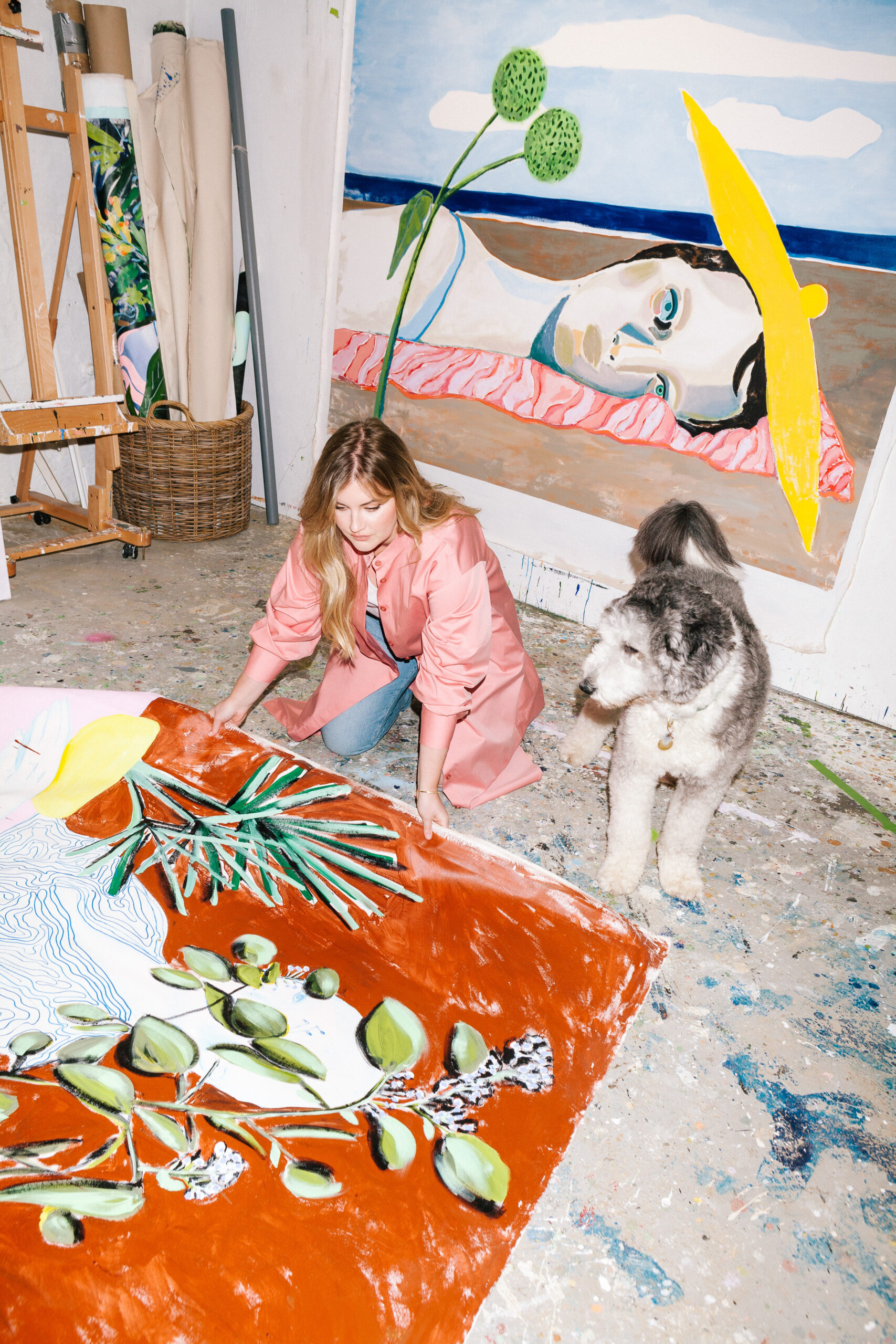
After many formative young-adult years engrossed in international exhibitions, media interviews, and tight deadlines, it makes sense that she would pursue a more forgiving pace as her career stabilizes. “There’s so much pressure to pump out work and make the deadline and have the show, but make sure it’s good and you have enough work to sell and everything.” Whereas a year ago a painting might have taken her three days, now she takes two to three weeks. The extra time only adds to the depth of her work, allowing for more layered faces and intention in the direction of her work. For someone who’s used to working gruelling hours, she says forcing herself to rest has been hard but rewarding.
Despite her more leisurely and deliberate pace, Armstrong’s calendar remains full. This fall she has solo exhibits in Montreal and Toronto, and for a Miami group show in May, she’s experimenting with sculpture for the first time, creating heads with protruding light bulbs. She also has an upcoming residency at the Vermont Studio Centre.
Speaking to Armstrong, her workplace problems seem surprisingly common—imposter syndrome, burnout, commuting in Toronto snow—which is a little unexpected given her level of artistic success. But this relatability, on and off canvas, has led her to where she is.
In her work, her characters embody what it feels like to be joyful, sad, excited, and maybe just a bit overwhelmed all at once—a medley of emotions that feel distinctly human. “I’m just trying to capture what it feels like to be alive today in my paintings,” she says.
Many young artists, particularly women, ask Armstrong about her secret to success. Her answer seems very Erin:
straightforward, and good-humoured. “I honestly don’t know. I don’t have any secret magical wisdom. I just keep making work.”

